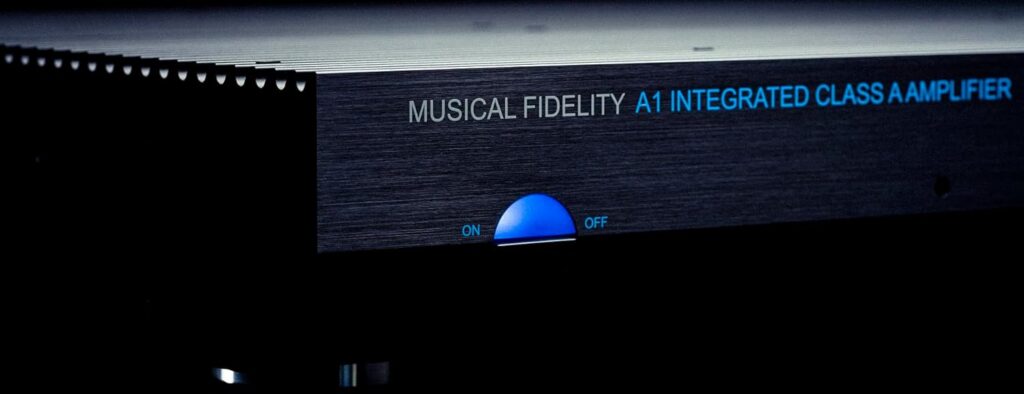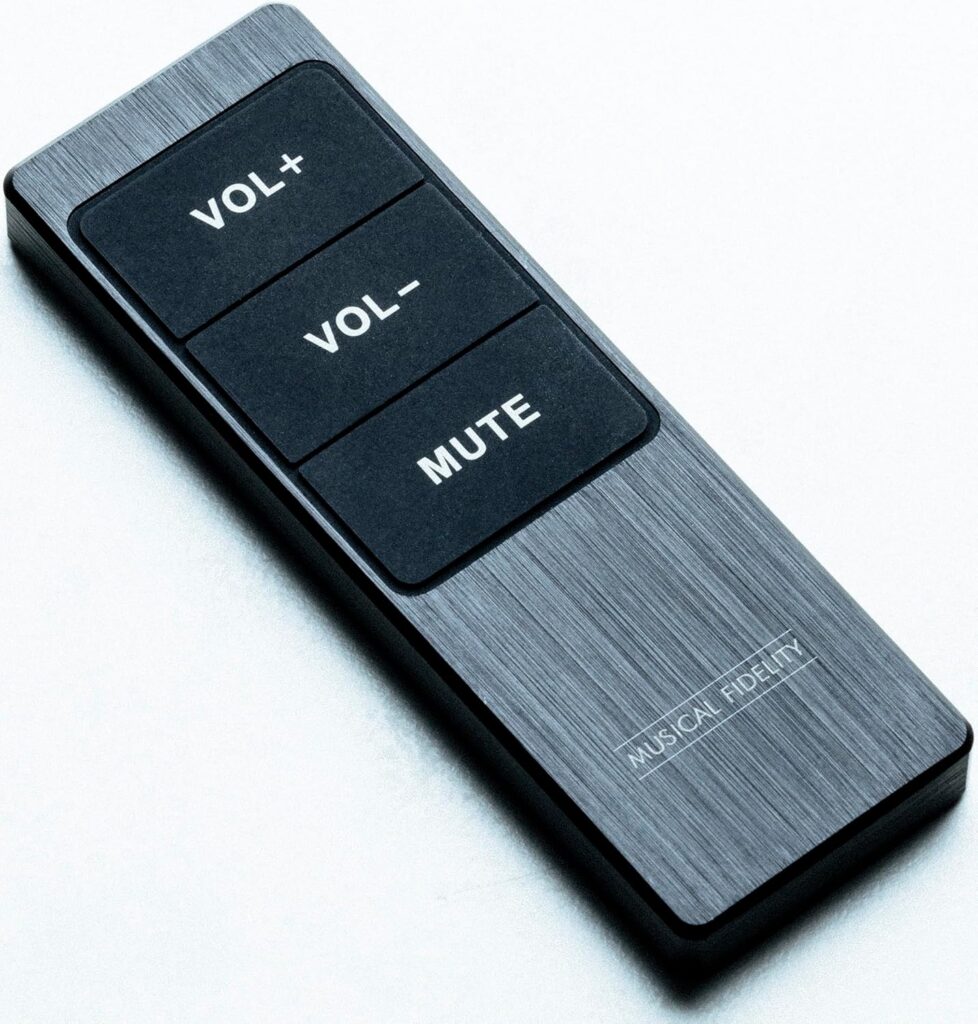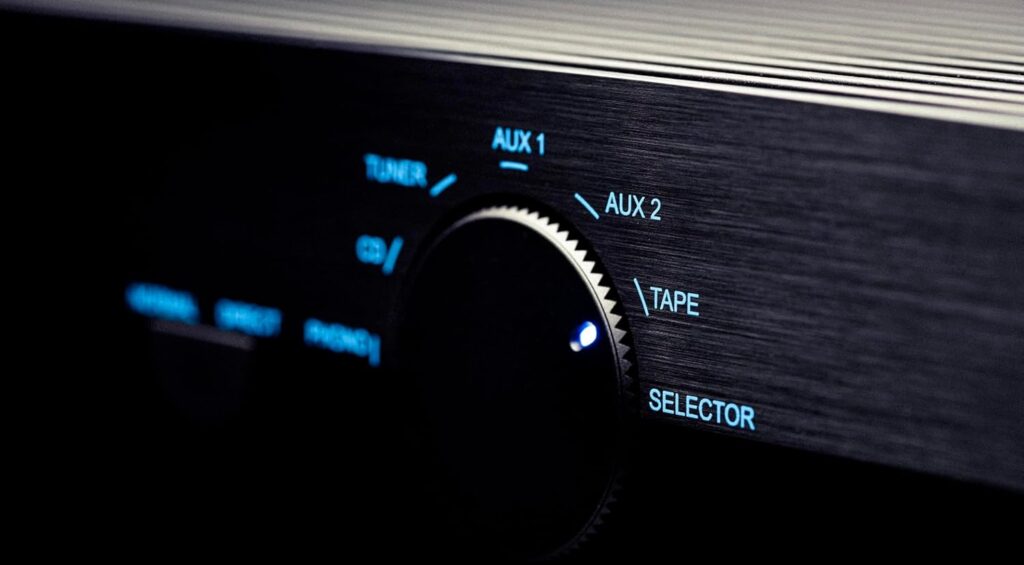I’ve been reviewing some Musical Fidelity products lately, and the A1 integrated amplifier caught my attention. The last integrated amplifier I got from this brand was the NuVista 600.2, and I was very impressed by it. The Musical Fidelity A1 stereo integrated amplifier has a similar story, and I cannot recommend this product enough.
The design of this integrated amplifier is just like the original A1, which was released in 1985. At that time, it was quite difficult to power speakers, and the A1 gained popularity because it easily drove even the most difficult speakers of that time, all with Class A circuitry (which is the least efficient). It showed everyone that there was something more to amplifiers than just high power.

The 2023 Musical Fidelity A1 has the same specifications, circuits, and appearance as the 1985 one, and with updated technologies, this is easily one of the best integrated amplifiers in 2025.
Musical Fidelity A1 Specs
| Dimensions (W x H x D) | 440 x 68.3 x 283.3 mm |
| Weight | 10.5kg |
| Max Power Consumption | 130W, 0W in standby (=Power Switch OFF) |
| Main Voltages | 230V/115V Internally set or 100V optional |
| Power | 25 Watts per channel into 8 Ohms |
| Voltage | 42.5 Volts peak to peak |
| Current | 25 Amps peak to peak |
| Damping Factor | 150 |
| Gain (Max Volume) | 32dB (Direct Mode), 42dB (Normal Mode) |
| Output Devices | 2 per channel |
| Signal / Noise Ratio | 82dB |
| Channel Separation | 85dB |
| Frequency Response | + 0, –1dB, 10Hz to 40 kHz |
| Line Level Sensitivity | 300mV rms nominal, 8V rms max |
| Line Level Inputs Impedance | 25k Ohms |
Musical Fidelity A1 Review
The Musical Fidelity A1 is a Class A stereo integrated amplifier. It offers 25 watts per channel into 8 ohms, but it can go up to 34 watts to push some speakers. It retails for US$1799, and it offers a complete bang for your buck if you have the right speaker system. It comes in only one color, Black, and it has a volume knob and an input control knob on the front panel.

On the back panel, the Musical Fidelity A1 has one phono RCA MM/MC input if you want to connect your turntable (moving magnet and moving coil), and five line RCA inputs. For outputs, there are four banana posts to connect your speakers, one line level RCA fixed out, and one line level RCA variable out.

The chassis is slightly bigger than the original A1, and the new version has a dual mono amplifier design. One of the problems with the original A1 was its heat resistance, and Musical Fidelity took feedback from this and improved the internal circuitry and materials that keep this integrated amplifier cool. The volume knob is now completely motorized, and that means you get a cool remote, which you didn’t get in the 80s.

The Musical Fidelity A1 uses the same circuit design as the original, but with some key differences. There is a new power supply arrangement, and there are new output devices. The phono stage has a new layout and a better volume potentiometer, which is motorised.

Let’s talk about a quirk of the Musical Fidelity A1. The top of the entire chassis is a heatsink, and this amplifier gets extremely hot as a result. Even though Musical Fidelity improved the circuitry and technologies for better heat resistance, this amplifier gets hot even in the winter. If you’re wondering how hot it gets, I could only put my hand over the heatsink for a few seconds before it got uncomfortable. In the box, Musical Fidelity also includes a big warning, so this amplifier is not for those who are watching their energy consumption.
In 2025, it is easy to connect a streamer and a DAC to your speaker system, and I connected the Musical Fidelity A1 with my McIntosh DS200 streaming DAC. The new A1 has two modes, normal and direct. There is only one difference between the two, and that is an extra 10dB of gain in normal mode. I prefer the normal mode, and some listeners might prefer the direct mode for a more laid-back sound.

The Musical Fidelity A1 gives a smooth, natural sound that most amplifiers these days are short of. The presentation and soundstage are cleaner and more dynamic, and the bass is well controlled. As long as the volume levels are kept within reason, the A1 sounds fantastic. The sound is rich and dynamic, and the shifts are perfect.
Verdict
The Musical Fidelity A1 integrated amplifier is a reminder of the original A1, and it has the best features of the original. If you want a touch of nostalgia and you want to have the classical HiFi experience, then this product is for you. If you value your power consumption, then this amplifier might not be the best for you. Nevertheless, the A1 is one of the best integrated amplifiers in 2025.
